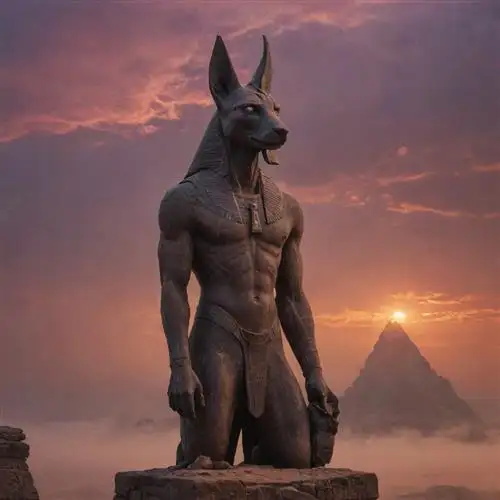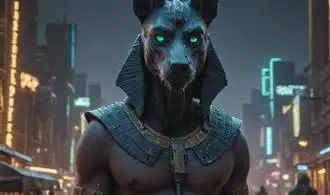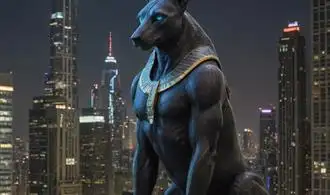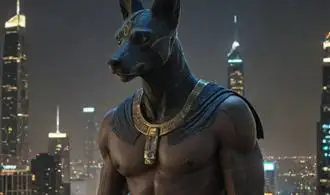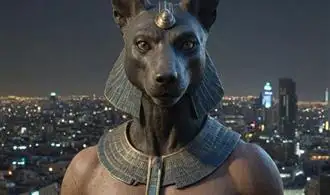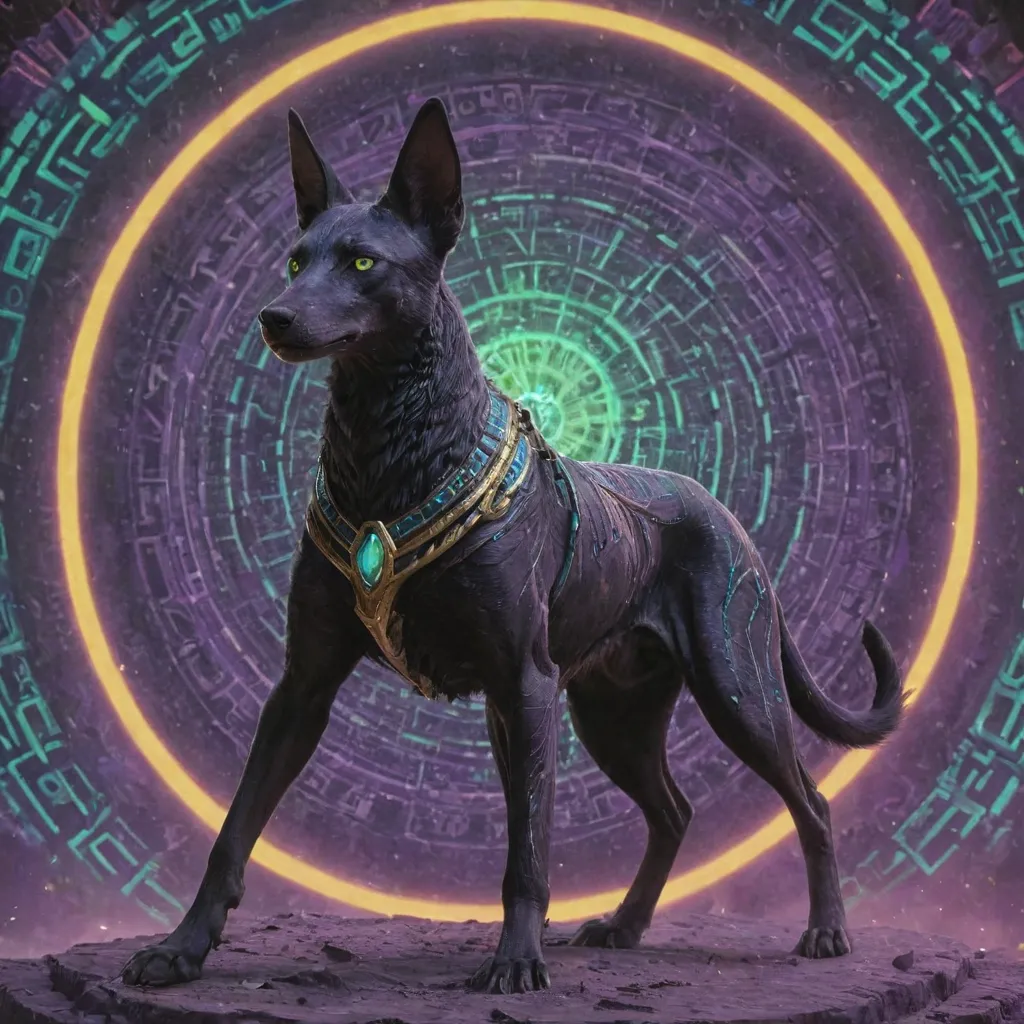
The Origins and Significance of Anubis
Anubis, the enigmatic jackal-headed deity, has long captivated the imaginations of scholars and enthusiasts alike. This ancient Egyptian god, whose roots can be traced back to the predynastic period, holds a profound significance that extends far beyond his iconic depiction. To delve into the origins and significance of Anubis is to uncover the intricate tapestry of ancient Egyptian belief systems and the profound role this deity played in the afterlife.
The precise origins of Anubis are shrouded in mystery, but historians and Egyptologists have pieced together a comprehensive understanding of his evolution and importance. Initially, Anubis was associated with the mummification process, serving as the patron deity of the art of embalming. This connection to the afterlife and the preservation of the physical form cemented Anubis's position as a pivotal figure in the Egyptian pantheon, responsible for guiding the deceased through the treacherous journey to the afterlife.
As the ancient Egyptian civilization matured, the role of Anubis expanded. He became closely linked with the judgment of the dead, overseeing the weighing of the heart ceremony, where the deceased's soul was measured against the feather of truth. This critical moment determined the fate of the individual, and Anubis's presence as the overseer of this process solidified his status as a gatekeeper to the afterlife.
Beyond his direct involvement in the afterlife, Anubis also held symbolic significance that extended to the living. The jackal, the animal form associated with Anubis, was believed to possess keen senses and the ability to navigate the liminal spaces between the world of the living and the dead. This association with the jackal imbued Anubis with qualities of watchfulness, protection, and the ability to bridge the gap between the mortal and the divine.
The iconography of Anubis further enriches our understanding of his significance. The distinctive black color of his jackal-like form is believed to represent the color of the fertile soil along the Nile River, symbolizing regeneration and the cycle of life and death. Additionally, the upright position and alert stance of Anubis's depictions convey a sense of vigilance and guardianship, reinforcing his role as a protector of the deceased.
Anubis and the Afterlife
Anubis and the Afterlife: Exploring the Pivotal Role of the Jackal-Headed God in Ancient Egyptian Funerary Rites
Anubis, the enigmatic jackal-headed deity, holds a central position in the intricate tapestry of ancient Egyptian beliefs surrounding the afterlife. As the god responsible for the embalming and mummification process, Anubis played a crucial role in guiding the deceased through the perilous journey to the afterlife. His presence was integral to ensuring the safe passage of the soul from the mortal realm to the realm of the divine.
At the heart of Anubis' significance lies his association with the complex funerary rituals that were essential to the ancient Egyptian worldview. As the guardian of the necropolis and the protector of the dead, Anubis was responsible for the meticulous preparation of the deceased for their eternal existence. The mummification process, overseen by Anubis, was believed to preserve the physical body, allowing the ka (life force) and the ba (soul) to reunite after death.
Anubis' role extended beyond the physical preparation of the body. The god was also believed to be present at the Weighing of the Heart ceremony, a pivotal moment in the journey to the afterlife. During this ritual, the heart of the deceased was weighed against the feather of Ma'at, the goddess of truth and justice. If the heart was found to be pure and the individual's actions in life were deemed righteous, the soul was granted passage to the afterlife. Anubis, as the overseer of this momentous event, ensured the fairness and accuracy of the proceedings, guiding the soul towards its final destination.
Furthermore, Anubis' association with the afterlife manifested in his role as the protector of the tomb and its contents. The jackal-headed god was believed to guard the body of the deceased, ensuring that the ka and ba remained undisturbed and able to continue their journey in the afterlife. The placement of Anubis statues and amulets within the tomb was a common practice, intended to safeguard the departed and their possessions.
Iconography and Symbolism of Anubis
Anubis, the jackal-headed deity, holds a profound and multifaceted role in ancient Egyptian mythology and iconography. This enigmatic figure serves as a gateway to understanding the intricate symbolism and metaphysical concepts that permeated the beliefs of the ancient Egyptians.
At the core of Anubis's iconography is the jackal, a creature deeply revered for its association with the afterlife and the processes of mummification and embalming. The jackal's keen senses, its ability to navigate the liminal spaces between the living and the dead, and its scavenging nature, made it a powerful symbol of the transition from life to the afterlife.
Anubis's portrayal as a jackal-headed deity is not merely a stylistic choice but a deliberate representation of the blending of the human and the animal realms. This fusion symbolizes the duality of the human experience, where the physical and the spiritual coexist and intertwine. The jackal head serves as a visual metaphor for the connection between the mortal world and the divine realm.
The color black, which is often associated with Anubis, holds profound significance in ancient Egyptian symbolism. Black was linked to the fertile soil of the Nile River, as well as the color of the mummified body. This association with the decomposition and rebirth of the body further solidifies Anubis's role as the guardian of the dead and the protector of the transition to the afterlife.
Anubis's iconographic depictions often include the crook and flail, two symbols of Egyptian kingship. These items, typically associated with the pharaoh, suggest Anubis's elevated status and his role as a mediator between the mortal and divine realms. The crook and flail symbolize Anubis's authority and his ability to guide the deceased through the complex journey of the afterlife.
Additionally, Anubis is frequently portrayed holding the "was scepter," a symbol of power and dominion. This scepter reinforces Anubis's position as a deity with the authority to oversee and guide the dead in their passage to the afterlife.
The symbolic significance of Anubis extends beyond his physical representation. His role as the "Opener of the Way" and the "Lord of the Sacred Land" highlight his function as a gatekeeper and a facilitator of the transition between the mortal and the divine realms. Anubis's presence at the crucial moment of mummification and the weighing of the heart during the judgment of the dead further solidifies his importance in the ancient Egyptian conception of the afterlife.
The Role of Anubis in Funerary Rites
Anubis, the jackal-headed deity of ancient Egyptian mythology, held a crucial role in the funerary rites and rituals of the ancient civilization. As the god responsible for the embalming and mummification process, Anubis played a pivotal part in the journey of the deceased from the physical world to the afterlife.
The importance of Anubis in funerary rites cannot be overstated. He was believed to preside over the embalming table, carefully and meticulously overseeing the mummification of the deceased. This process, which transformed the physical body into a vessel for the soul, was essential for ensuring a successful transition to the afterlife. Anubis was responsible for guiding the deceased through the complex and often treacherous journey to the realm of the dead, ensuring their safe passage and ultimate judgment before the divine tribunal.
One of the primary duties of Anubis in funerary rites was the weighing of the heart ceremony. This ritual, which determined the worthiness of the deceased, was a crucial step in the journey to the afterlife. Anubis would stand by as the heart of the deceased was weighed against the feather of Ma'at, the goddess of truth and justice. If the heart was found to be pure and free of sin, the individual was deemed worthy of entering the afterlife. Anubis played a vital role in this process, ensuring the fairness and accuracy of the weighing.
Additionally, Anubis was responsible for the protection of the deceased during the embalming process and in the afterlife. The jackal-headed deity was often depicted standing guard over the mummy, ensuring its safety and preservation. This symbolic representation of Anubis's protection was believed to extend beyond the physical realm, guarding the soul of the deceased as it embarked on its journey to the afterlife.
Anubis in Modern Interpretations and Mythological Connections
Anubis, the enigmatic jackal-headed deity, has captivated the imagination of people across cultures and eras. Beyond its ancient Egyptian roots, the symbolism and significance of Anubis have transcended the boundaries of mythology, finding resonance in modern interpretations and artistic representations.
In the realm of modern interpretations, Anubis is often viewed as a guardian of the dead, a protector of the soul's journey through the afterlife. This ancient role has been reinterpreted and reimagined, with Anubis serving as a symbol of transformation, rebirth, and the cyclical nature of life and death. Many contemporary artists and occultists have incorporated Anubis into their work, exploring the deity's multifaceted symbolism and its relevance to the human experience.
One prominent example is the use of Anubis imagery in Jungian psychology and the exploration of the collective unconscious. Anubis is often seen as a representation of the psychopomp, the guide who leads souls to the afterlife, drawing parallels with the Jungian concept of the animus or anima – the masculine or feminine archetypes within the psyche. This connection has inspired numerous works of art, literature, and academic discourse, delving into the deeper psychological and spiritual implications of the Anubis archetype.
Beyond its psychological significance, Anubis has also been closely associated with the concept of death and the afterlife in modern interpretations. The deity's role as the guardian of the necropolis and the embalmer of the dead has led to its portrayal as a symbol of the transition between life and death, the liminal space where the mortal and the divine intersect. This association has been explored in various forms of contemporary art, from occult-inspired paintings to immersive installations that aim to evoke the mysteries of the afterlife.
Furthermore, Anubis has been widely incorporated into modern pagan and occult practices, particularly within Wiccan and Kemetic (ancient Egyptian-inspired) traditions. In these contexts, Anubis is often invoked as a guide, protector, and facilitator of spiritual transformation, lending its ancient symbolism to modern rituals, meditations, and magical workings. This ongoing dialogue between the ancient and the contemporary has contributed to the enduring fascination with Anubis and its continued relevance in the modern era.

